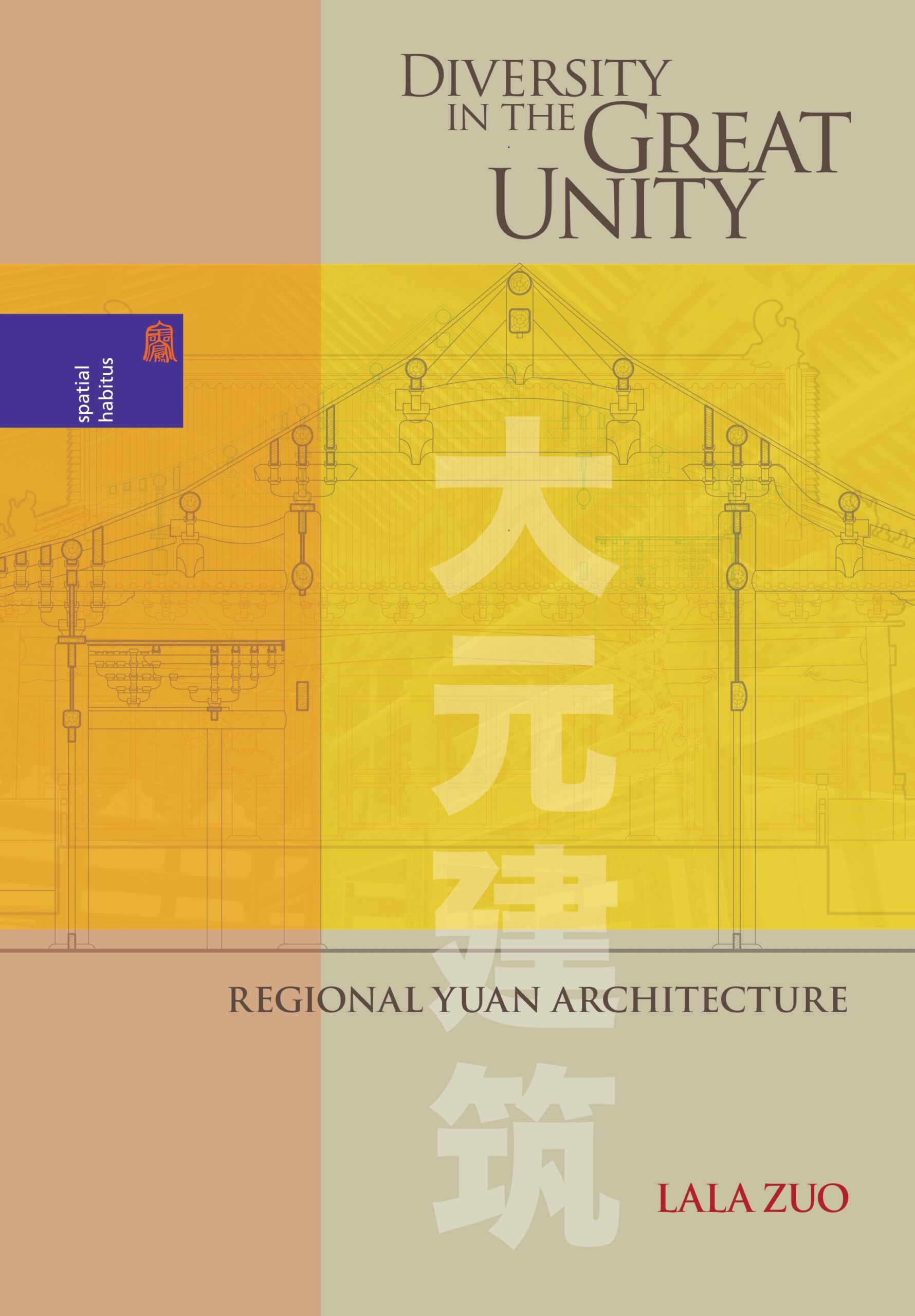Diversity in the Great Unity: Regional Yuan Architecture
- About the Book
-
Timber-framed architecture has long been viewed as an embodiment of Chinese civilization, a hierarchic society ruled by Confucian orthodoxy. Throughout its history, Chinese architectural design was closely regulated by court-enforced building codes, which created a highly standardized and modularized system. In Diversity in the Great Unity—the first in-depth English-language work to present regional traditions of Chinese architecture based on a detailed study of the timber construction system—Lala Zuo maintains that during the nearly century-long Yuan dynasty (1271–1368), the tradition of “Han-Chinese” architecture as coded, uniform, and controlled by the central government did not take hold. She presents case studies of twenty buildings along the Yangtze River built during the Yuan, often considered a transitional phase in Chinese architectural history.
Most of the structures have firm dates, and all are analyzed according to patronage, chronology, and function. Their representativeness is determined by their broad geographic distribution as well as by their scarcity. Numerous photographs and line-drawings accompany the analyses. Referencing Yuan architecture in north China along the Yellow River, Zuo outlines its characteristics in three regions and connects the regional traditions to periods before and after the Yuan, allowing her to contextualize architecture in Yuan social and political history. She explains how the division of regional traditions, especially those in the south, contributed to the transformation of dynastic styles from the Song (960–1279) to the Ming (1368–1644) and how the Song-Yuan migration may have affected architectural design.
An appendix presents an extensive glossary of Chinese architectural terms in Song terminology to enable a better understanding of the subject. Although the primary focus of this book is the technical evolution of surviving Yuan architecture, its interdisciplinary approach goes beyond architecture by offering a re-evaluation of Chinese society in light of cultural and religious diversity under Mongol rule.
- About the Author(s)
-
Lala Zuo, Author
Lala Zuo is assistant professor of Chinese at the United States Naval Academy, Annapolis, Maryland.Ronald G. Knapp, Series Editor
Ronald G. Knapp, SUNY Distinguished Professor Emeritus, State University of New York, New Paltz, where he taught from 1968 to 2001, has been carrying out research on the cultural and historical geography of China since 1965. He is the author or editor of more than twenty books concerning the vernacular architecture of China and Southeast Asia.Xing Ruan, Series Editor
- Reviews and Endorsements
-
- Abundantly illustrated with photographs and fine line drawings, this valuable analysis of Yuan regional architecture convincingly argues that while some of its buildings reflect Chinese models, others indicate cultural integration due to foreign rule, thereby presenting a fuller picture of the period.
—Morris Rossabi, City University of New York - Diversity in the Great Unity is a highly significant work that will help readers better understand Chinese architecture within a Chinese context. Dr. Zuo is to be applauded for her efforts to introduce to a western audience the methodologies and terminologies used by Chinese archaeologists and historians studying heritage architecture in the last decade.
—Xu Yitao, Peking University - Zuo expands on her dissertation research conducted under [Nancy] Steinhardt in a groundbreaking survey of extant buildings from the Yuan dynasty (1271–1368). The text is enhanced by the author’s own meticulously crafted architectural diagrams. Based on archaeological and textual sources and informed by on-site research, this work reveals the diversity of three regional traditions in timber-frame architecture.
—K. R. E. Greenwood, Oberlin College, CHOICE (October 2020)
- Abundantly illustrated with photographs and fine line drawings, this valuable analysis of Yuan regional architecture convincingly argues that while some of its buildings reflect Chinese models, others indicate cultural integration due to foreign rule, thereby presenting a fuller picture of the period.
- Supporting Resources
-










